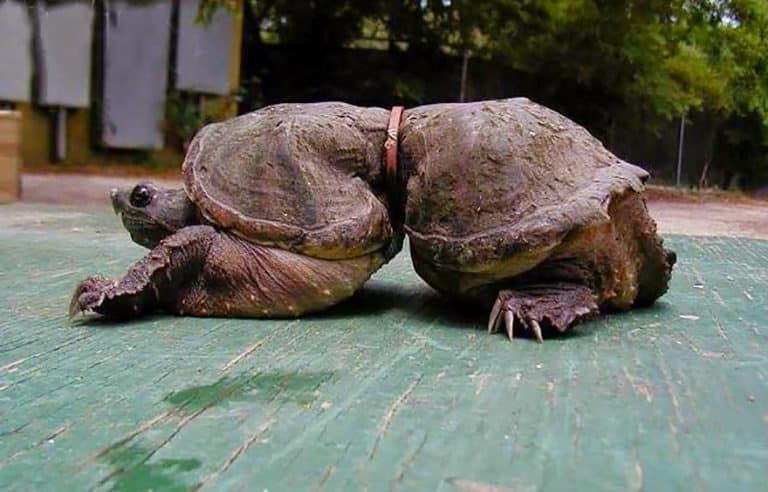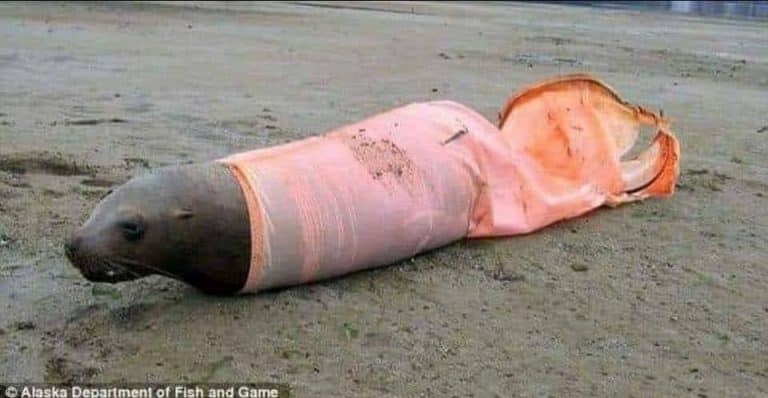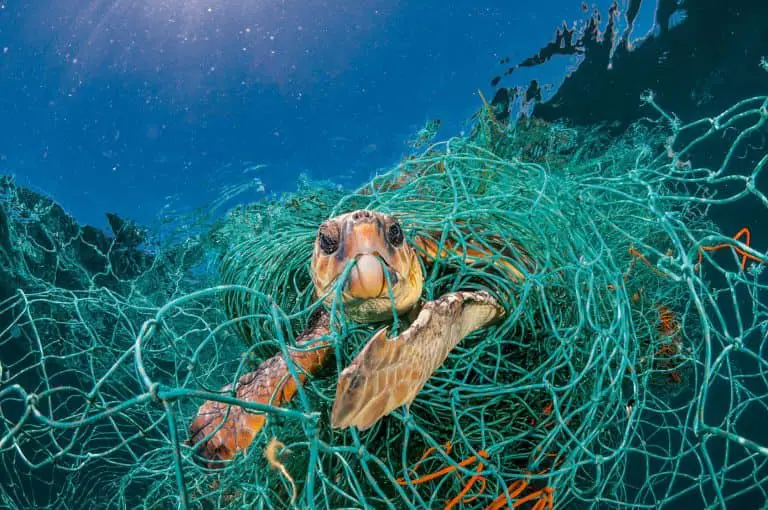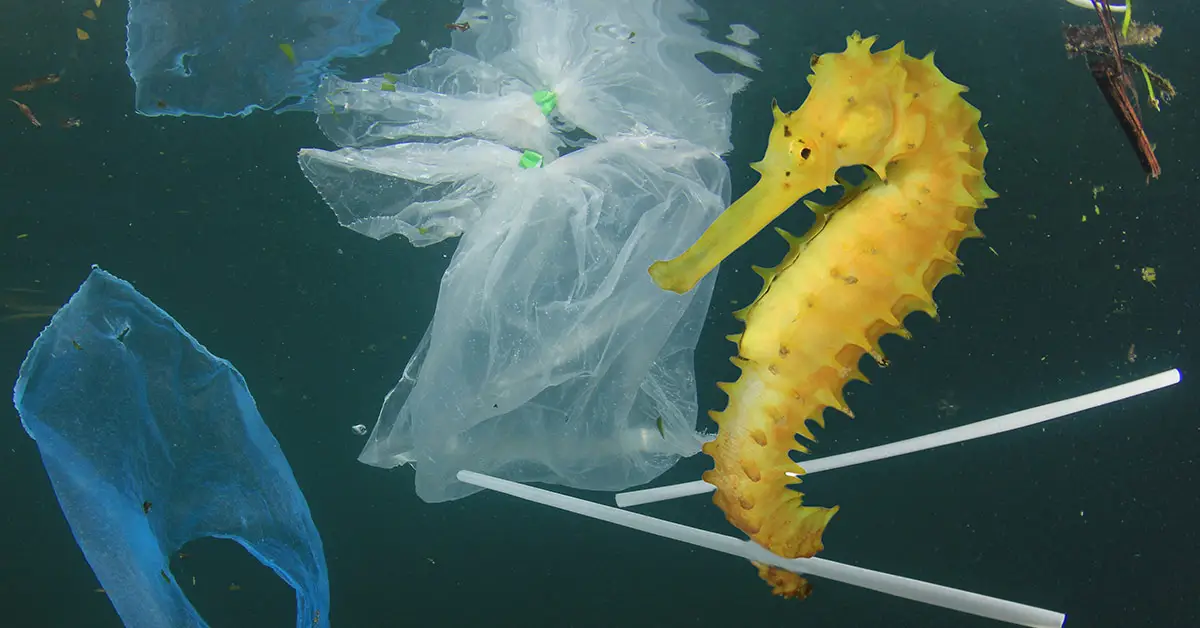The world has a plastic problem, and there is no place where it is more evident than in our oceans. This delicate ecosystem and the creatures that live in it is struggling to thrive amongst the plastic bags, rings, bottles, and ties that have invaded their home. What’s worse is that the problem goes much deeper than what can be seen by the human eye. These photos are proof that we need to act now and will make you want to recycle everything.
Our World Has A Plastic Problem That Will Make You Want to Recycle Everything
Whether you live far inland or right along the coast, the plastics that you use in your daily life eventually make it into the ocean in some form or another. These plastics are causing tremendous problems for the animals and organisms that call the ocean home. (1)

Though nearly every country worldwide has a waste problem, the United States is the world’s most wasteful country, producing 2kg (about 4.5lbs) of waste per person per day. Much of that waste is made of plastic. (1)
Environmental concerns about plastic waste are not a 21st-century idea: The first recycling programs because of these worries began in the 1960s. (2) Roughly 20 years later, in 1981, the world’s first curbside recycling pick-up began in Kitchener, Ontario, Canada. (3)

Unfortunately, over the decades, recycling, specifically plastic recycling, has failed to stop plastics from polluting our oceans and waterways. In fact, in some ways, it has made the problem worse. (1)
Reduce, Reuse, Recycle: Why Recycling Everything Isn’t Enough
For starters, this article is not meant to make you stop recycling altogether. Rather, this is to inform you on how to best go about recycling and encourage you to reduce your plastic consumption overall.

The well-known tagline for waste management is “reduce, reuse, recycle.” Though the symbol for this is often shown in a triangular continuum, the truth is really:
- Reduce – Do your best to use as little plastic, especially single-use plastic, as possible
- Reuse – Reuse and repurpose as many items as you can
- Recycle – This is your last resort option when the first two aren’t possible.

The bottom line: Recycling should be your last resort, not your go-to option. Why? Because 91% of the plastic that gets tossed in the blue bin every year doesn’t actually get recycled. (4) This is due to a number of reasons, including (1, 4, 5):
- Contamination/unclean products
- Too much waste for facilities to handle
- Not a big enough market for recycled plastic
That third point is the biggest part of the problem: The amount of plastic we produce far exceeds market needs. If there’s no one to buy the plastics to reuse them into something new, those items end up in the landfill. (1)

Burning plastic releases a whole host of dangerous chemicals into the atmosphere, and plastic takes approximately 400 years to break down completely. (4) Some of it ends up whole in our oceans and eventually into the stomachs, up the noses, and around the necks of marine animals. Much more of it enters the ocean in the form of microplastics.
Read: Arctic Norway will soon be home to the world’s first energy-positive hotel
What Are Microplastics?
Microplastics are tiny plastic particles that fish and other aquatic organisms mistake as food. They are currently the most prevalent type of marine debris found in the world’s oceans and lakes. (6)

They are toxic to marine life and put their fertility, growth, and survival at risk. Most importantly, they threaten the health and survival of zooplankton: Tiny aquatic organisms that are the bases for the marine food chain and are crucial players in regulating the entire planet’s climate. (7)
These tiny plastic particles make their way up the food chain and into nearly every ecosystem on Earth. Other places microplastics can be found are (7):
- Arctic snow
- Mountain soil
- Many rivers
- Inside birds and other animals
At this point, even humans are unwittingly consuming and inhaling microplastics. (7)
Read: Hawaii Group Makes Record Haul After Pulling 103 Tons Of Trash From The Pacific
What You Can Do To Help
The plastic problem is one that we all play a role in. This means that we also all have plenty of opportunities to be a part of the solution.
Reduce Your Consumption
The number-one most important thing anyone can do is to simply use as little plastic as possible.

At the store:
- Use reusable bags
- Don’t put produce in plastic produce bags: Purchase reusable ones or put them loose in your cart.
- Don’t purchase produce or other products that come in plastic containers
At Home:

- Quit using single-use plastics and switch to plastic-free alternatives, such as
- Shampoo and conditioners bars instead of versions in plastic bottles
- Toothpaste in jars or toothpaste tabs instead of plastic tubes
- Bamboo toothbrushes instead of plastic
- Laundry sheets instead of tubs
- Wear clothing made of sustainable materials rather than polyesters, which contain plastic particles that get into the water when you wash them.
- Switch to sustainable sanitary products, such as:
- Reusable diapers
- Menstrual cups, washable period underwear, and reusable pads
- Reusable makeup removing wipes
Out and About:

- Use reusable water bottles, not plastic ones
- Take reusable travel mugs to coffee shops
- Keep reusable, non-plastic straws and cutlery in your bag to use at take-out restaurants
- Ask your server not to put a straw in your drink at bars and sit-down restaurants
Reuse As Much As Possible
Reuse items as often as you can, and repair clothes and other items instead of throwing them away and buying new ones. When shopping, look for sustainable producers that use recycled and sustainable materials.

Recycle Properly
When you absolutely have no other option, recycle – but do it properly. Rinse the item, so it is clean and make sure you put it in the proper bin. If a container or other plastic item has food or other residues, it likely won’t get recycled.
Take Action
Many places worldwide are starting to put more regulations in place to limit the use of single-use plastics, and you can help push that forward.

Pressuring politicians by writing letters or creating petitions is a great way to start. Voting in elected officials at every level of government who list the climate crisis as a top priority is also important.
So should you recycle everything? In short, no: You should reduce and reuse as much as you possibly can, and then recycle everything else.
Keep Reading: The Glistening-Green Tanager Is So Bright It Looks Like It Could Glow In The Dark
Sources
- “‘‘Plastic recycling is a myth’: what really happens to your rubbish?” The Guardian. Oliver Franklin-Wallis. August 17, 2019.
- “When Did Americans Start Recycling?” History. Sheila Mulrooney Eldred. April 14, 2020.
- Steward Ship Ontario.
- “A whopping 91% of plastic isn’t recycled.” National Geographic. Laura Parker. December 2018.
- “The Battle Against Recycling Contamination is Everyone’s Battle.” Media Room. Brent Bell. April 3, 2018.
- “What are microplastics?” Ocean Service.
- “Microplastic pollution in oceans vastly underestimated – study.” The Guardian. Damian Carrington. May 2020.

